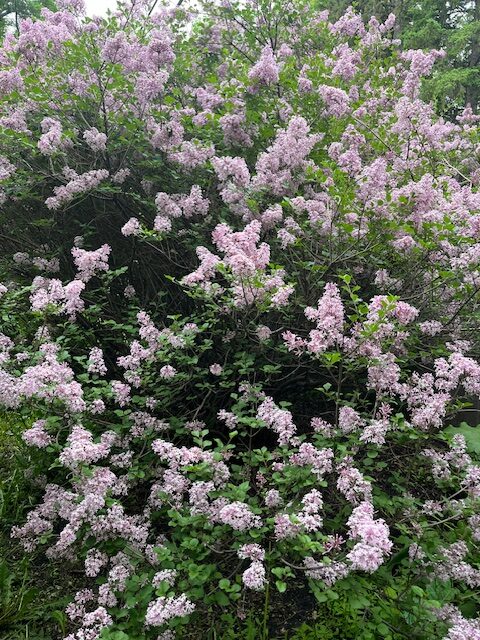Talking Plants
Jillian Patrie | University of Minnesota Yard and Garden Extension
We are entering into the summer months and spring blooming landscape plants are finishing up their floral displays for the season and you may be wondering what to do. Here are a few tips to keep spring bloomers healthy and coming back brilliantly every year.
Tulips, daffodils, hyacinth, iris and many other perennials grace us with bright and happy blooms in the spring and summer months, but when the flowers are done, we are left with the leaves and stalks. The remaining parts of the plant keep photosynthesizing, creating food and energy for the bulb, corm, rhizomes, or roots below. It is best to leave the leaves and other green parts standing until mid-summer when they will turn brown and dieback on their own. To prevent energy going to seed production for tulips and columbine cut off spent blooms once they are finished.
Spring shrubs come with their own set of maintenance routines and pruning at the wrong time can affect blooming next year. Forsythia are the first shrubs to send out their bright yellow flowers even before the leaves, pruning after it is done blooming will help maintain its shape. In late May, Mockorange displays beautiful white flowers, that smell like orange blossoms, pruning should be done immediately after blooming ends. Lilacs need to be deadheaded (only removing the spent flowers) or pruned after blooming has finished. New flower buds for next season start forming shortly after the current year’s blooming has finished. Newly planted lilacs can take 1-2 years to bloom and do not require pruning for 2-3 years. There are many types of lilac shrubs, some of which will bloom multiple times a season and they come in a variety of colors.
Hydrangeas, though a summer-fall bloomer, do require thought when it comes to timing pruning. Hydrangeas with a cone shaped flower, provide great winter interest and can be pruned in late winter or spring. Big leaf hydrangea (macrophylla), produce flower buds for the next season in late summer to early fall, and should be pruned after they finish blooming. Smooth hydrangeas, like Incrediball and Annabelle form flower buds on new growth and can be pruned to the ground in the spring after being established for a couple years.
If pruning wasn’t timed right your shrub may have less or no blooms the following year, but this will depend on the level of pruning that was done and what type of shrub you have. Plants are forgiving and should be back to normal blooming the following year!
*When renewal pruning older established shrubs, remove up to 1/3 of the oldest, thickest stems or trunks down to the ground.
For more information visit https://extension.umn.edu/how/planting-and-growing-guides and for questions about this article or local assistance please contact Clay County Extension Educator Jill Patrie at 218-299-7388 or by email at patri350@umn.edu.


